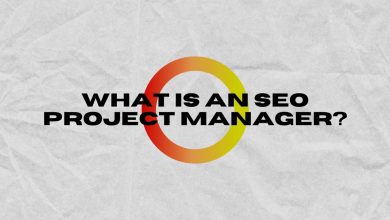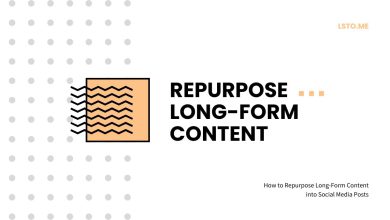
Non-fungible tokens (NFTs) have become a hot topic in the art world in recent years, with many artists and collectors embracing technology as a new way to buy, sell, and display digital artwork. In this blog post, we’ll explore what NFTs are, how they work, and their impact on the art market.
What are NFTs?
What are NFTs? If you’ve been keeping an eye on the world of art, collectibles, or cryptocurrency lately, you might have come across this term. NFT stands for Non-Fungible Token, which is a type of digital asset that is unique and cannot be exchanged for something else at an equal value. In short, it’s a way to prove ownership and authenticity in the digital realm.
NFTs are created using blockchain technology, which makes them secure and virtually impossible to duplicate or counterfeit. They allow artists and creators to sell their work as one-of-a-kind pieces that can’t be replicated or reproduced. This has led to a surge in interest among artists who want to monetize their digital creations.
While NFTs have gained popularity in the art world, they are also being used for other purposes such as sports collectibles, music royalties, and even virtual real estate.
How do NFTs work?
NFTs, or non-fungible tokens, have been making waves in the digital world lately. But what are NFTs and how do they work? To put it simply, NFTs are unique digital assets that are stored on a blockchain ledger. Unlike cryptocurrencies such as Bitcoin, each NFT is one-of-a-kind and cannot be replicated.
The process of creating an NFT involves using blockchain technology to create a permanent record of ownership for a specific asset. This could be anything from a piece of artwork to a tweet or even a meme. Once an NFT has been created, it can be bought and sold like any other type of asset on various online marketplaces.
One of the most interesting aspects of NFTs is their ability to provide proof of ownership and authenticity for digital assets that were previously difficult to monetize.
What is the impact of NFTs on the art market?
NFTs, or non-fungible tokens, have been making waves in the art market. They are unique digital assets that use blockchain technology to verify ownership and authenticity. With NFTs, artists can sell their work as one-of-a-kind collectibles and earn royalties on future sales. But what is the impact of NFTs on the art market?
One potential impact is that NFTs could disrupt the traditional art world by enabling artists to bypass galleries and auction houses altogether. This could give more power to individual creators who can self-publish their work online and connect directly with buyers. On the other hand, it might also make it harder for emerging artists without a strong online presence to get noticed.
Another impact of NFTs is that they could change how we think about art ownership and value.
Let’s dive deeper into some of the key issues surrounding NFTs and their impact on the art market.
1. Ownership and Authenticity:
The rise of non-fungible tokens (NFTs) has brought forth a new era in the art industry, with artists and collectors alike excited about the possibilities it presents. NFTs are digital tokens that represent unique items like artwork, music, or videos. They create a new way for artists to prove ownership and authenticity of their creations. This is especially important because there have been issues surrounding NFTs regarding originality and copyright infringement.
One major benefit of NFTs is that they provide proof of ownership for digital art, which was previously difficult to prove without a paper trail. With blockchain technology, buyers can verify proof of ownership and trace the history of previous sales with ease. Additionally, this technology also makes it possible for creators to receive royalties every time their work gets resold on the market.
2. Environmental Concerns
NFTs, or non-fungible tokens, have become a hot topic in the world of art and collectibles. While many praise NFTs for their ability to provide artists with a new revenue stream and democratize the art market, there are some concerns surrounding their environmental impact. Creating and transacting NFTs requires a significant amount of energy consumption, which is mainly sourced from fossil fuels. This is due to the computing power required to solve complex mathematical equations necessary for validating transactions on the blockchain.
As NFTs continue to gain popularity in the art world, so do concerns regarding their impact on the environment. The carbon footprint of an NFT can be larger than that of physical artwork due to its digital nature. Additionally, many platforms hosting NFT sales utilize Ethereum as their blockchain network, which has come under fire for its high energy usage.
3. Market Hype and Risk
NFTs, or non-fungible tokens, have become the talk of the town in recent years. They are unique digital assets that can be bought and sold like any other physical asset. The market for NFTs has grown tremendously, leading to some pieces of digital artwork being sold for millions of dollars.
While NFTs offer a new way to monetize digital art and secure ownership of unique content, there are several issues surrounding them. One major concern is the ecological impact of creating and selling NFTs. The process involves a significant amount of energy consumption due to the use of blockchain technology. Another issue is the potential for fraud and scams within the industry, as it is still largely unregulated.
The rise of NFTs has also raised questions about their impact on the traditional art market.
Conclusion
NFTs have the potential to revolutionize the art market by creating a new way for artists to sell and monetize their digital creations. While there are valid concerns about the environmental impact and the sustainability of the current market hype, NFTs are undoubtedly an exciting development in the world of art and technology.




